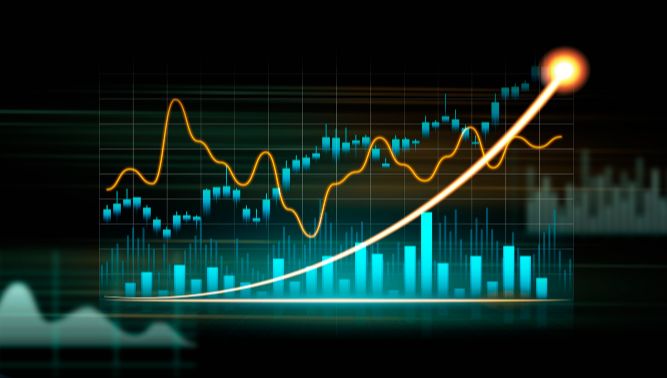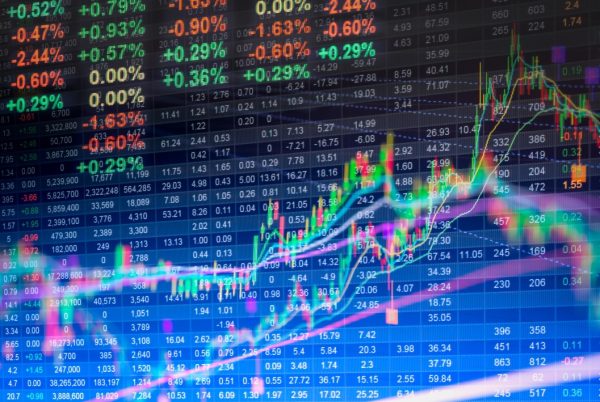February 3, 2022
As the recovery enters its third year in 2022, history regularly reminds us how year three of a bull market is tougher to navigate than the first two. Recall the 2011 European banking crisis (spreads widened +460 basis points) and the 2018 Fed hike selloff (spreads widened +220 basis points), where both were unexpected turbulent third-year events in otherwise extended credit cycles. Just like most early recoveries, for the past two years the market has been dominated by the Federal Reserve (Fed) accommodation, rapid economic growth and steadily rising asset values. Unfortunately, the market doesn’t like too much of a good thing, easy money included, and so it’s time to pull back the punch bowl.
The Fed is convinced that COVID-19, or what remains of it, threatens inflation more than growth. Given that CPI is at a 40-year high, we second that view. While we acknowledge tighter policy brings new risks, it’s good to see the Fed finally move. In its hawkish shift, the Fed is acknowledging that too much inflation hurts confidence and is an impediment to reaching full employment. Checking inflation should help with labor friction and ultimately make for a more durable cycle. With the Fed appearing willing to go all-in on raising rates and starting QT (quantitative tightening), tighter financial conditions are ahead. This will slow growth and flatten yield curves, requiring investors to throw out the ZIRP (Zero Interest-Rate Policy) world playbook and adopt a more selective third-year mindset. However, as the Fed continues to grow its balance sheet, we think these steps indicate a maturing cycle, not the end of the expansion. Investors are well served to stay invested, position for coupon returns and brace for volatility.
Some January Effect
While January was a dismal month for risk, the correction in asset prices was quite rational. Post Powell’s comments, the market shifted its expectation from three to almost five Fed hikes in 2022 and interest rate sensitive areas sold off the hardest, disproportionately punishing long-duration assets. Since then, investment-grade fixed income has underperformed high yield, growth stocks underperformed value and defensive sectors have lagged commodities and cyclicals. Floating rate loans, which have little duration, actually generated a positive return for the month. Note that despite a breakout in the VIX, high yield spreads did not retest their November wides touched post-Omicron. This points to a market responding to a shift in interest rates and inflation, not a contracting economy or higher default expectations.
Flatter COVID-19, Flatter Treasuries
With Fed hikes imminent, the accompanying selloff in the front end of the treasury curve should come as no surprise. The yield curve has flattened in the first year of every Fed tightening cycle since the 1950s, on average by 80 basis points (2s/10s have narrowed ~20 basis points year-to-date). What’s more important for the cycle is the steepness of the yield curve. Every recession for the last 75 years followed an inversion of the yield curve, typically with a 12–18-month lag. So, while the 2s/10s stand at a paltry 60 basis points today, the term structure is still positive. This suggests the risk of a recession in the next 12 months is still low but worth watching. When the yield curve does invert it’s a useful indicator to get defensive and overweight higher-quality BB rated bonds.
Credit Investors Shouldn’t Fear Rising Rates
Credit investors should embrace higher interest rates. They tend to coincide with an improving economy and credit rating upgrades. High yield has generated strong returns in every rising interest rate cycle since 1994. While GDP growth is slowing, it remains well above pre-COVID-19 levels. Higher interest rates also enable investors to reinvest income at higher rates. For long-term investors whose time horizon exceeds the duration of a bond, the benefit of higher reinvestment rates more than compensates for a bond’s decline in price.
Fundamentally high-yield companies can also handle higher interest rates. The high yield default rate is below 1%. According to JP Morgan, the average high yield issuer reported third quarter 2021 revenue and EBITDA that was +13.1% and +8.4% above third quarter 2019 levels, respectively. Meanwhile, leverage stands at 4.77x, roughly 0.5x higher than pre-COVID-19. However, if we strip out leisure and transportation, sectors still on the mend, leverage falls to 3.96x, a six-year low. Factor in crude oil prices approaching levels not seen since 2014 and defaults should remain well-anchored. In fact, the biggest event risk facing high yield issues isn’t credit deterioration but LBOs (leveraged buyout) and share buybacks, which remain low but have started to increase.
Carry On
While we think it’s too soon to sell credit, it does make sense to pivot. We prefer asset classes in this environment that offer durable income. With less room for spread compression carry matters. Floating rate loans and BB/B short duration bonds are both attractive ways to clip a coupon without taking duration risk. Single B bonds are the most compelling area of the market on quality. They offer more income and less duration than BBs while being less vulnerable to slower growth than CCCs. That said, we aren’t running scared of duration. Buying longer maturity bonds still makes good sense if you can identify rating upgrade candidates. Given the large pool of BB rated potential rising stars, this is a fertile area to find alpha. Within sectors, we like commodity industries as an inflation hedge and believe industries leveraged to a reopening economy offer the most future credit improvement. If the market stages a third-year selloff, similar to 2011 or 2018, provided credit continues to signal no recession, we stand ready to buy the dip.
The views expressed are those of Spouting Rock Asset Management as of February 1, 2022, and are not intended as investment advice or recommendation. For informational purposes only. Investments are subject to market risk, including the loss of principal. Past performance does not guarantee future results. There can be no assurances that any of the trends described will continue or will not reverse. Past events and trends do not imply, predict or guarantee, and are not necessarily indicative of future events or results. Investors cannot invest directly in an index.





